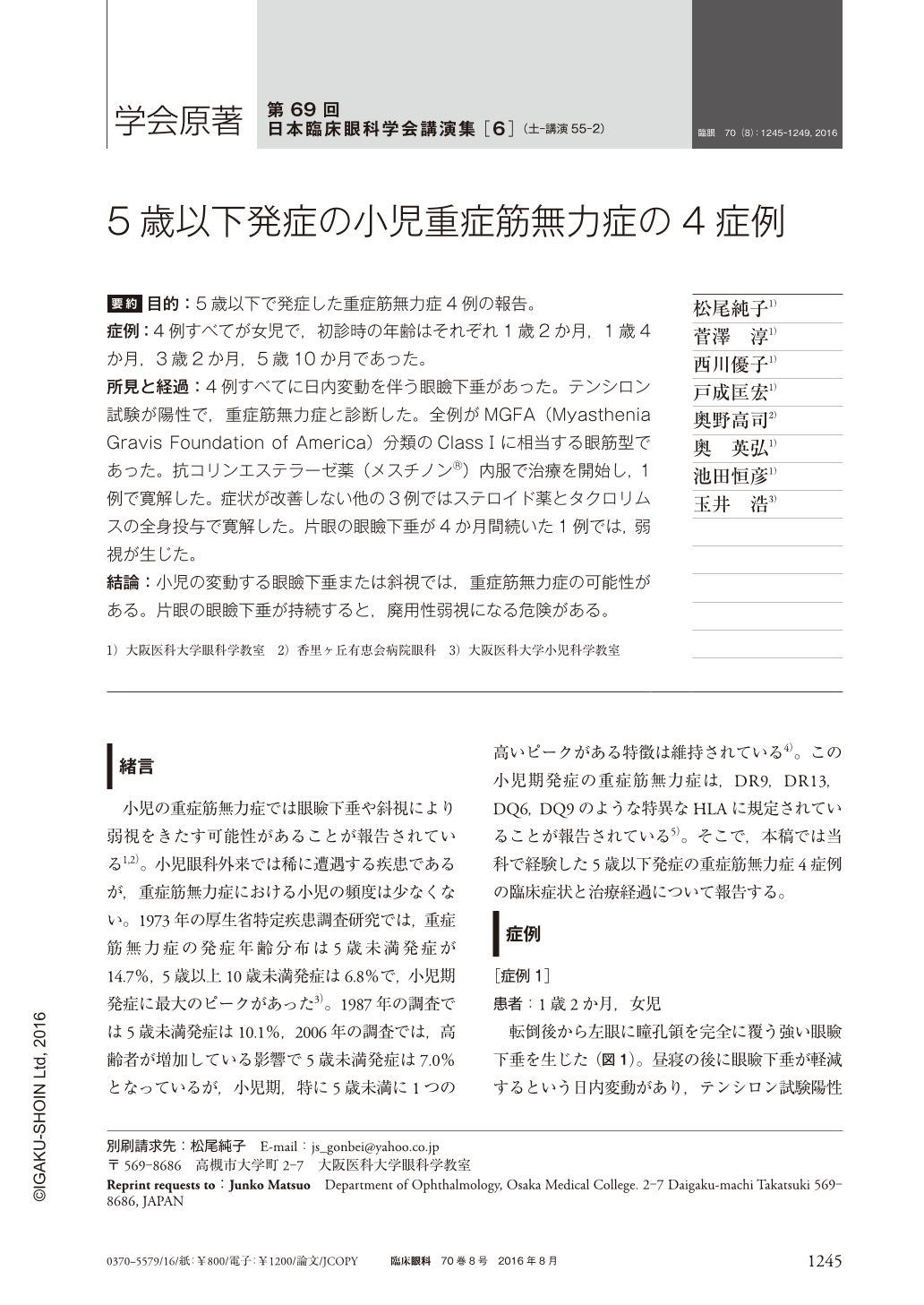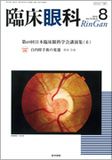Japanese
English
- 有料閲覧
- Abstract 文献概要
- 1ページ目 Look Inside
- 参考文献 Reference
要約 目的:5歳以下で発症した重症筋無力症4例の報告。
症例:4例すべてが女児で,初診時の年齢はそれぞれ1歳2か月,1歳4か月,3歳2か月,5歳10か月であった。
所見と経過:4例すべてに日内変動を伴う眼瞼下垂があった。テンシロン試験が陽性で,重症筋無力症と診断した。全例がMGFA(Myasthenia Gravis Foundation of America)分類のClass Ⅰに相当する眼筋型であった。抗コリンエステラーゼ薬(メスチノン®)内服で治療を開始し,1例で寛解した。症状が改善しない他の3例ではステロイド薬とタクロリムスの全身投与で寛解した。片眼の眼瞼下垂が4か月間続いた1例では,弱視が生じた。
結論:小児の変動する眼瞼下垂または斜視では,重症筋無力症の可能性がある。片眼の眼瞼下垂が持続すると,廃用性弱視になる危険がある。
Abstract Purpose: To report 4 cases of childhood-onset myasthenia gravis.
Cases: All were females and were aged 14 months, 16 months, 3 years 2 months, and 5 years 10 months respectively at the time of initial visit.
Findings and Clinical Course: All the 4 cases showed blepharoptosis with diurnal variations. All were positive for tensilon test and were diagnosed with myasthenia gravis. All were classified as Class Ⅰ according to MGFA classification. All the cases were initially treated by systemic anticholinestrase, resulting in remission in one case. The other 3 cases achieved cure after systemic corticosteroid and tacrolimus. One case developed amblyopia following unilateral blepharoptosis lasting for 4 months.
Conclusion: Blepharoptosis or heterotropia may be initial signs of childhood myasthenia gravis. Persistent blepharoptosis may result in amblyopia.

Copyright © 2016, Igaku-Shoin Ltd. All rights reserved.


